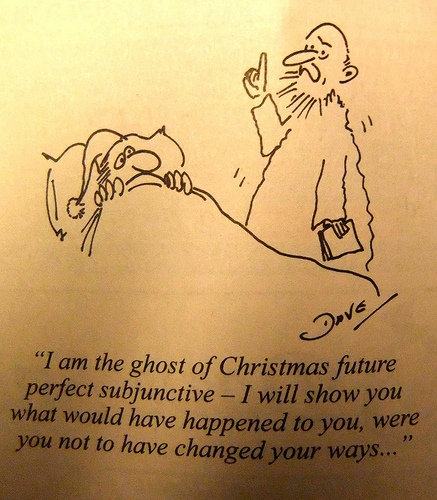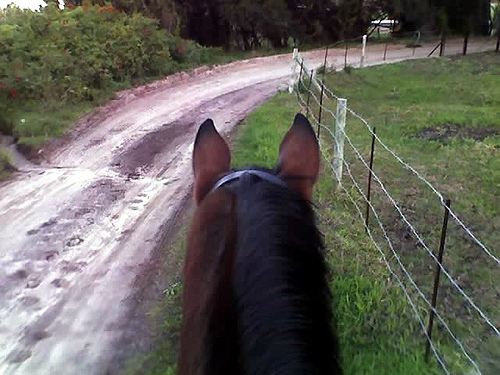20 Book-Title Hacks for Any Genre
Today’s guest post is by David H. Safford.
Are you struggling with your title?
Every writer does.
Not only does a title have to capture the essence of the whole story, it needs to begin establishing the voice, themes, and setting long before a reader chooses to turn the page or sample the Kindle.
How can you know where to begin?
Thankfully there are no rules to titles. Rather, there are many approaches you can take to assigning your book, story, or article the right headline.
And to illustrate how these approaches work, I’m going to re-title one of the most famous works of all time: Romeo and Juliet, twenty times.
Interestingly, this title would almost never work today. Sure, it works for superheroes (Batman and Robin) or marketable renegades (Bonnie and Clyde), but writers of romantic tragedy today would never use the first names of their characters alone!
So we’re going to update it for today’s market, the goal being that you will come away with twenty or more ideas for your own stories.
Here we go!
- Context: Once Upon a Time in Verona. Use elements of the time/place to establish a general sense of the story, like Dickens’s A Tale of Two Cities.
- Story / Narrative: The Romance of the Two Unlikely Teens. Similar to Context, Story/Narrative focuses on the plot rather than the setting, to give the reader a taste of what’s to come, like Monty Python and the Quest for the Holy Grail.
- Concrete Information: Two Families. Since stories are full of nuance and texture, often authors will employ a utilitarian approach by identifying major items or locations without any context or detail, thereby inflaming the reader’s curiosity. J. K. Rowling did this with all seven Harry Potter books (Harry Potter and the Half-Blood Prince, ).
- Juxtaposition: War in Verona. Try playing with the yin and yang of your book’s themes with this approach. War in Verona would work for Romeo and Juliet since R&J is a romance and the word war would be an unexpected term. You could also play with expectation here and call it The Life of Romeo and Juliet, again juxtaposing one word (life) and the expectations it arouses against a very different reality.
- Line in Story: All Are Punished. This popular approach allows the author to create anticipation in the reader with an image, often poetic, that eventually holds significant weight in the story. Think Alice Sebold’s The Lovely Bones.
- Voice: Eyes, Look Your Last. Since Romeo and Juliet is a play, every line is dialogue. But with Voice, you specifically choose a voice to inhabit for the title. It may be a character’s voice or one that you manufacture to capture the essence of the conflict or setting. For example, the words No Country For Old Men are never spoken in Cormac McCarthy’s book (or the film); however, they embody the spirit of Sheriff Bell. This is also an example of . . .
- Famous Quotation: The Wife of Your Youth. A common approach is to steal from other great writers. Half of the “classics” you read in high school and college follow this approach, and many successful titles do it today: Of Mice and Men, The Grapes of Wrath, Absalom, Absalom!, East of Eden, Things Fall Apart, My Sister’s Keeper, and, as mentioned, No Country For Old Men.
- Setting: Mean Verona Streets. Similarly utilitarian to Concrete Information, the Setting approach works especially well in stories in which the setting itself functions as a character or personality. It doesn’t even have to be exotic or employ any adjectives. After all, Fargo is a huge success, isn’t it?
- Mood/Tone: Chaos Rises. With this approach, the author typically grabs a tone-based noun or adjective and then pairs it with a fitting verb giving that tone action. Articles like The and A are omitted with this abrupt approach.
- Thesis: Why You Should Talk to Your Parents. Useful for both fiction (primarily in comedic genres) and nonfiction, the Thesis approach allows you to state the premise of the work in plain, practical English. Of course with fiction the intent is to be tricky or perhaps snarky, so keep your audience in mind on this one to avoid accidental alienation. Think: The Perks of Being a Wallflower.
- Dedication: To Mercutio, With Love. Like some other approaches, this plays with the reader’s expectations by emphasizing a character (or location, like Russia) and revealing that he/she/it will be important, suffer, thrive, or possibly die. It can also indirectly reveal the point of view and protagonist of the piece (in this case, it is not Mercutio).
- Playing with Presumption: Marrying the Enemy. Similar to Juxtaposition, the objective is to plant an idea in the reader’s mind. Ideally, you control the point of view from which the reader approaches the piece. With this example, the reader’s moral judgment comes into play: Marrying brings up judgments about relationships and sex, and Enemy is a word that can get very political depending on one’s point of view.
- Irony: The Long Courtship. Like Playing With Presumption, Irony plays with double entendre, often by overstating or understating an aspect of the plot, characters, conflict, or setting. The Great Gatsby uses Irony because of the fact that Jay Gatsby is an illusionary creation of a mere mortal, James Gatz, and his “greatness” in the eyes of 1920s New York is all a lie.
- Punctual: Ugly. Romance. Popular because of their staccato impact, Punctual titles are good for work with a powerful voice and/or first-person point of view. In order for this approach to be truly effective, each punctuated word needs to be wholly true to the article or book’s conflict and themes.
- Shakespearean: The Most Lamentable Tragedy of Romeo Montague and Juliet Capulet. While none of us can be Shakespeare, we can pretend, and often a long-form title can grab a reader’s attention. This style found a new following with the dramatic reimagining of the Star Wars trilogy into Elizabethan tragedies, or The Curious Incident of the Dog in the Night-Time.
- One Word: Crossed or Stars or Star-Crossed or Fate. A risky but often-rewarding choice, a One Word title can grab readers and start a multibook series. Ellen Hopkins’s Crank series is a strong example. Carefully consider such a title, though, as One Word titles leave a lot to the reader’s imagination, and you need to make sure your subtitles and cover art clearly convey your story’s message.
- Exclamations: Lovers! By exclaiming a core idea through the title, the author communicates not just the main idea of the piece but the intensity of it. Exclamations can also be One Word but, again, must again be chosen carefully. Think of the film Saved! or the musical Honk!
- High-Traffic Blog Post: 17 Reasons You Shouldn’t Marry Your Father’s Nemesis. Tongue in cheek, eh? Well, it’s true. Web readers consume content because they want to learn how to improve their lives, and the Internet is an ocean of hive-mind advice. So why not use this for a piece of fiction or a poem? The opportunities here are nearly endless, and it’s worked before: How to Lose a Guy in 10 Days, anyone?
- Heavy-Impact Nonfiction: Civil Strife is Threatening Our Youth. Again, a useful approach even for fiction—and great for election-season satire too. It establishes a voice and a powerful premise for you to build your story upon. Your reader enters the world of the work primed and ready to go.
- Symbol: The Friar’s Letter. We end with one of the most common and practical of approaches: Symbol. With this, you give away one key story detail—the story’s central image or idea. The fun begins as you hide aspects of it for the reader to discover, as The Scarlet Letter does, and as every Nicholas Sparks novel ever does too.
So there you have it—twenty title hacks for practically any genre!
Think about your current project, then brainstorm three titles for it using three different approaches and share them in the comments below!
 David H. Safford is the author of The Bean of Life, the story of a man who decides to save the world with coffee. Read a free preview of the novel here. Between cups of joe, David blogs about storytelling, self-publishing, social justice, and his wish that the makers of Frozen had consulted him about that Hans twist.
David H. Safford is the author of The Bean of Life, the story of a man who decides to save the world with coffee. Read a free preview of the novel here. Between cups of joe, David blogs about storytelling, self-publishing, social justice, and his wish that the makers of Frozen had consulted him about that Hans twist.












Thank you for this brilliant blog @DavidHSafford. Not that it makes the process of choosing any easier, you offered so many great choices, but at least after reading this fabulous blog I know more about my choices.
Also, following you on twitter.
Thank you again.
And thank you! Choosing the title is absolutely the toughest part! Though many writers struggle to even conjure up choices. Hopefully this will create the first problem in exchange for the second!
Hi, very useful blog post. I am struggling with a title for my new novel about a Dutch cop in the war years under Nazi occupation. I had a number of titles, my last favourite ‘FAULTY’, with a subtitle A policeman in WWII, another one Knight Without A Horse, and a third choice using the motto of that particular, mounted police force: Courageous and Unblemished.
What do you think?
Since it’s a novel, I recommend avoiding subtitles. Stick with the best summation of the story, conflict, and/or theme that you can. If you like the single-word title, I like “Unblemished.” For a multiple-word title, “Knight Without a Horse” is strong. Good luck!
Thanks for your input.
Johanna